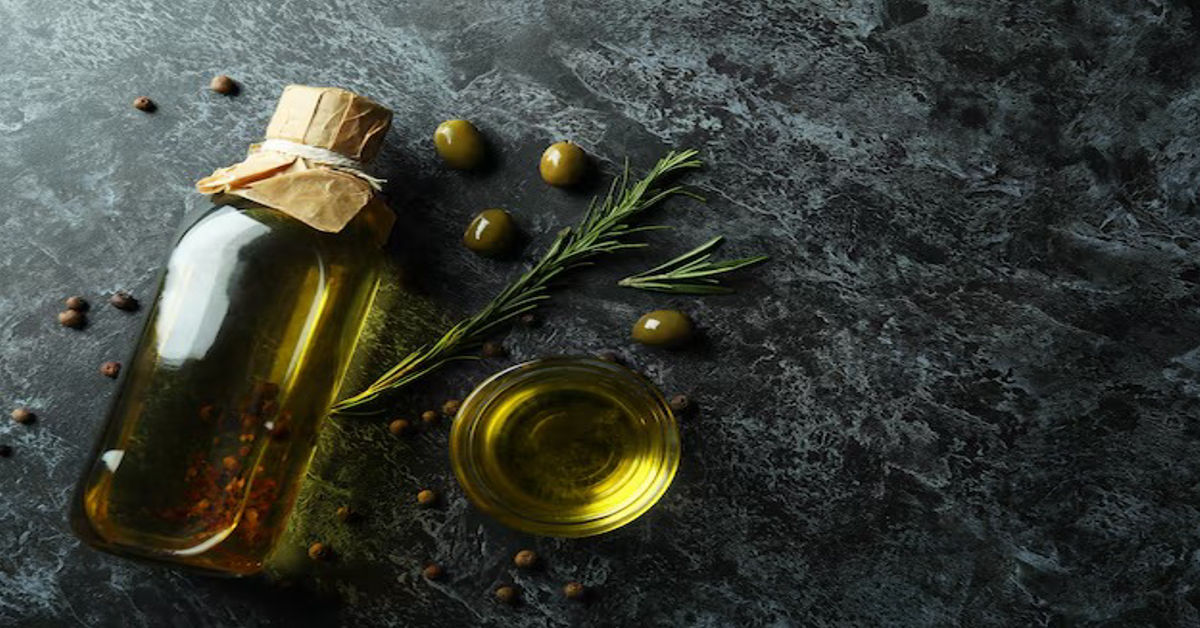Among the many cooking oils available today, olive oil has earned a legendary reputation for both taste and health. Yet, many people remain unsure about its classification and ask the question: is olive oil a seed oil? This confusion is understandable because most edible oils found in stores are derived from seeds such as sunflower, soybean or canola. Olive oil, however comes from a very different source—the fruit of the olive tree.
This distinction may sound simple but it carries significant implications for nutrition, health, and even culinary tradition. Unlike seed oils, which often undergo industrial refining, olive oil—particularly extra virgin varieties—retains its natural composition thanks to mechanical pressing methods. This makes it one of the most nutrient-rich oils in the world. In this guide, we’ll explore the true nature of olive oil, how it compares to seed oils, its health benefits, and why its unique identity sets it apart as more than just another cooking oil.
What Defines a Seed Oil?
Seed oils are a group of vegetable oils extracted specifically from the seeds of plants. They have become a staple in modern kitchens because they are inexpensive to produce have neutral flavors, and possess relatively high smoke points that suit frying and industrial food preparation. Examples include sunflower, soybean, canola, and cottonseed oils.
The production of seed oils is far from simple. Most are extracted through industrial-scale processes involving chemical solvents like hexane, followed by refining, bleaching, and deodorizing. While this makes the oils shelf-stable and affordable, it also strips away antioxidants and delicate nutrients. The resulting oils are mostly composed of polyunsaturated fatty acids, particularly omega-6 fats, which can promote inflammation in the body if consumed excessively without balancing omega-3 intake.
Seed oils, therefore, represent a modern invention, driven largely by industrial food production rather than traditional dietary patterns. This stands in stark contrast to olive oil, which has been consumed for thousands of years without the need for aggressive processing.
Why Olive Oil Is Not a Seed Oil
Olive oil holds a unique place in the oil family because it comes from fruit, not seeds. It is classified as a fruit oil, as it is mechanically pressed directly from the flesh of ripe olives. This process preserves its natural flavor, aroma, and health-promoting compounds. Unlike seed oils, olive oil does not require chemical refinement or industrial solvents to be usable.
Extra virgin olive oil, the highest quality form, is produced through cold pressing, ensuring no heat or chemicals degrade its nutritional profile. The result is a product rich in oleic acid, polyphenols, and vitamin E—nutrients that directly support cardiovascular health, reduce oxidative stress, and improve metabolic balance.
Understanding this distinction highlights why olive oil should not be grouped with seed oils. While both fall under the broader umbrella of plant-based oils, olive oil’s unique source, method of production, and nutrient density put it in a category of its own.
Nutritional Composition of Olive Oil vs Seed Oils
The nutritional differences between olive oil and seed oils are striking and provide valuable insight into why olive oil is considered healthier. Olive oil is dominated by monounsaturated fats, especially oleic acid, which is known to support heart health and longevity. It also contains naturally occurring polyphenols and antioxidants, compounds rarely found in significant levels in refined seed oils.
Seed oils, in contrast, are higher in polyunsaturated fats, particularly omega-6 fatty acids. While the body needs omega-6 in moderation, the modern diet often provides far too much of it, leading to an imbalance between omega-6 and omega-3 intake. This imbalance can trigger chronic inflammation, a factor in conditions such as cardiovascular disease, obesity, and arthritis.
Expanded Nutritional Profile of Olive Oil vs Seed Oils
| Oil Type | Source | Main Fatty Acid (%) | Omega-6:Omega-3 Ratio | Key Nutrients Retained | Processing Method | Health Impact Potential |
| Olive Oil | Olive fruit | Oleic Acid (55–83%) | 10:1 (balanced) | Vitamin E, Polyphenols | Cold-pressed | Anti-inflammatory, cardioprotective |
| Sunflower Oil | Seeds | Linoleic Acid (60–70%) | 120:1 (very high) | Minimal after refining | Chemical extraction | Can promote inflammation if overused |
| Soybean Oil | Seeds | Linoleic Acid (51%) | 7:1 (moderate-high) | Some phytosterols | Solvent extraction | Neutral to inflammatory effects |
| Canola Oil | Seeds | Oleic Acid (61%) | 2:1 (moderate) | Trace vitamin K | Refined and deodorized | Neutral but less antioxidant support |
| Cottonseed Oil | Seeds | Linoleic Acid (50%) | 200:1 (extreme) | Very low | Industrial refining | Potentially harmful if overconsumed |
This table illustrates how olive oil maintains a more balanced fatty acid ratio and nutrient retention compared to heavily refined seed oils, which often lose beneficial compounds during processing.
The Extraction Process of Olive Oil
The way an oil is extracted plays a crucial role in its quality and nutritional value. Olive oil is produced through a natural, mechanical process. First, olives are harvested and washed to remove dust and impurities. They are then crushed into a paste, which is slowly pressed to release the oil. This method, particularly when done without heat, ensures that the natural compounds remain intact.
Extra virgin olive oil is the purest form, requiring no additional refining. In contrast, seed oils are subjected to high-heat and chemical processing to yield usable oil. These processes not only alter the fatty acid structure but also reduce the nutritional value of the oil. By avoiding these industrial steps, olive oil stands out as a minimally processed, nutrient-rich product that retains both flavor and health benefits.
Health Benefits of Olive Oil Compared to Seed Oils
Olive oil is often described as the cornerstone of the Mediterranean diet, a dietary pattern associated with some of the longest-living populations in the world. Its benefits stem largely from its composition of monounsaturated fats, antioxidants, and anti-inflammatory compounds. Regular consumption of olive oil has been linked to reduced risk of cardiovascular disease, improved brain health, better blood sugar regulation, and lower oxidative stress.
Seed oils, while not inherently harmful, do not offer the same level of protective compounds. Their high omega-6 content may tip the balance toward inflammation when consumed in excess, particularly in diets already rich in processed foods. This makes olive oil a superior choice for long-term health and disease prevention.
Comparative Health Effects of Olive Oil and Seed Oils
| Health Aspect | Olive Oil (Fruit Oil) | Seed Oils (Industrial Oils) |
| Heart Health | Improves HDL, lowers LDL | Neutral to slightly harmful |
| Inflammation | Reduces via polyphenols | Can increase due to omega-6 excess |
| Brain Function | Supports memory and cognition | Limited evidence of benefit |
| Antioxidant Protection | High (Vitamin E, polyphenols) | Very low |
| Impact on Longevity | Strongly positive (Mediterranean diet) | Unclear, no historical tradition |
This expanded comparison makes it clear that olive oil does more than simply provide energy—it actively supports long-term health in ways seed oils cannot match.
Historical Use of Olive Oil vs Seed Oils
Olive oil’s history stretches back thousands of years, particularly in regions surrounding the Mediterranean. Ancient civilizations such as the Greeks, Romans, and Egyptians not only used olive oil as food but also as medicine, fuel for lamps, and even in religious rituals. Its status as a symbol of health, purity, and prosperity has carried into modern times.
By contrast, seed oils are relatively new to the human diet. Large-scale production only became common during the industrial revolution, when new extraction methods made it possible to process previously unusable seeds like cottonseed. Unlike olive oil, seed oils do not have a long tradition of culinary or cultural use. Instead, their adoption was largely driven by industrial food systems looking for cheap, shelf-stable fats. This historical divide highlights why olive oil remains trusted and celebrated, while seed oils are often viewed with caution.
Culinary Uses of Olive Oil vs Seed Oils
In the kitchen, olive oil is prized for its rich, distinctive flavor and versatility. Extra virgin olive oil is perfect for drizzling over salads, pairing with bread, or enhancing vegetables with a fruity and peppery kick. For cooking at higher temperatures, refined olive oils offer a stable and flavorful option. Olive oil not only enhances taste but also contributes valuable nutrients to meals.
Seed oils, on the other hand, are typically used for deep frying, baking, and in the production of packaged foods. Their neutral taste makes them suitable for mass-market products, but they lack the flavor complexity of olive oil. While functional in cooking, they do not provide the same cultural or nutritional richness that olive oil offers.
Culinary Comparison Between Olive Oil and Seed Oils
| Aspect | Olive Oil | Seed Oils |
| Flavor | Fruity, peppery, aromatic | Neutral, bland |
| Common Culinary Uses | Salads, dressings, sautéing, roasting | Frying, baking, processed food industry |
| Traditional Role in Diet | Central in Mediterranean cuisine | Largely absent until industrialization |
| Smoke Point Range | 350°F–410°F (depends on type) | 400°F–450°F |
| Nutritional Enhancement | Adds antioxidants and healthy fats | Adds mostly calories with little else |
This culinary comparison demonstrates how olive oil not only functions as a cooking medium but also enhances the sensory and nutritional experience of food, unlike most seed oils.
Common Misconceptions About Olive Oil
A common myth is that olive oil is unsafe for cooking due to its relatively moderate smoke point. However, studies show that extra virgin olive oil is more stable under heat than many refined seed oils, thanks to its antioxidant content. Another misconception is that all olive oils are equal, when in fact, quality varies greatly. Extra virgin olive oil offers the best health benefits, while refined varieties may lose much of their nutrient density.
It is also worth noting that olive oil is not a luxury product reserved only for salads and gourmet dishes. Its versatility and health benefits make it a practical choice for everyday cooking, proving that healthy eating can be both accessible and flavorful.
Conclusion
The question is olive oil a seed oil has a simple but important answer it is not. Olive oil is a fruit oil with unique properties that distinguish it from seed oils in both production and nutrition. Its rich composition of monounsaturated fats, antioxidants, and anti-inflammatory compounds makes it one of the healthiest oils in existence.
Unlike industrially refined seed oils, olive oil carries the weight of history, culture, and science behind its benefits. Whether used in cooking, dressings, or traditional remedies, it remains a cornerstone of healthy living. Choosing olive oil over seed oils is not just a matter of taste—it’s an investment in long-term health and well-being.
FAQ Section
1. Is olive oil a seed oil?
No, olive oil is a fruit oil derived from the olive fruit, while seed oils are extracted from seeds like sunflower, canola, or soybean.
2. What makes olive oil healthier than seed oils?
Olive oil retains antioxidants and monounsaturated fats, while see’d oils are higher in omega-6 fats and often lose nutrients through industrial refining.
3. Can olive oil be used for frying?
Yes, olive oil is stable for sautéing and light frying. Refined olive oils have higher smoke points suitable for deeper cooking.
4. Why is extra virgin olive oil recommended?
Extra virgin olive oil is minimally processed, retaining maximum antioxidants, polyphenols, and natural flavor.
5. How long has olive oil been in use?
Olive oil has been used for thousands of years, with roots in Mediterranean civilizations, while see’d oils are a modern industrial product.







